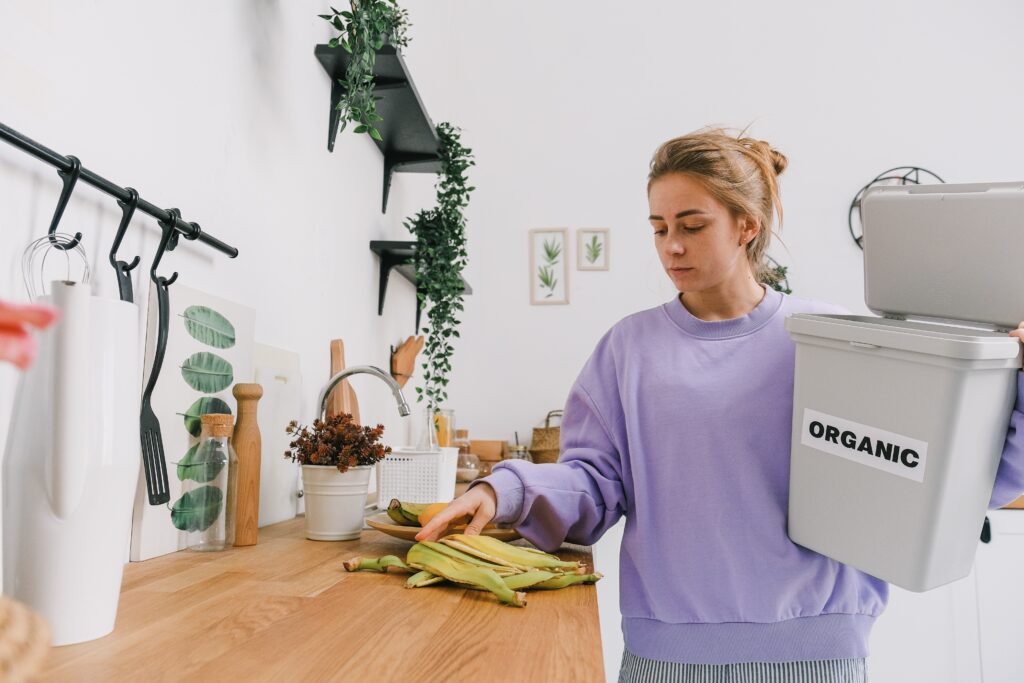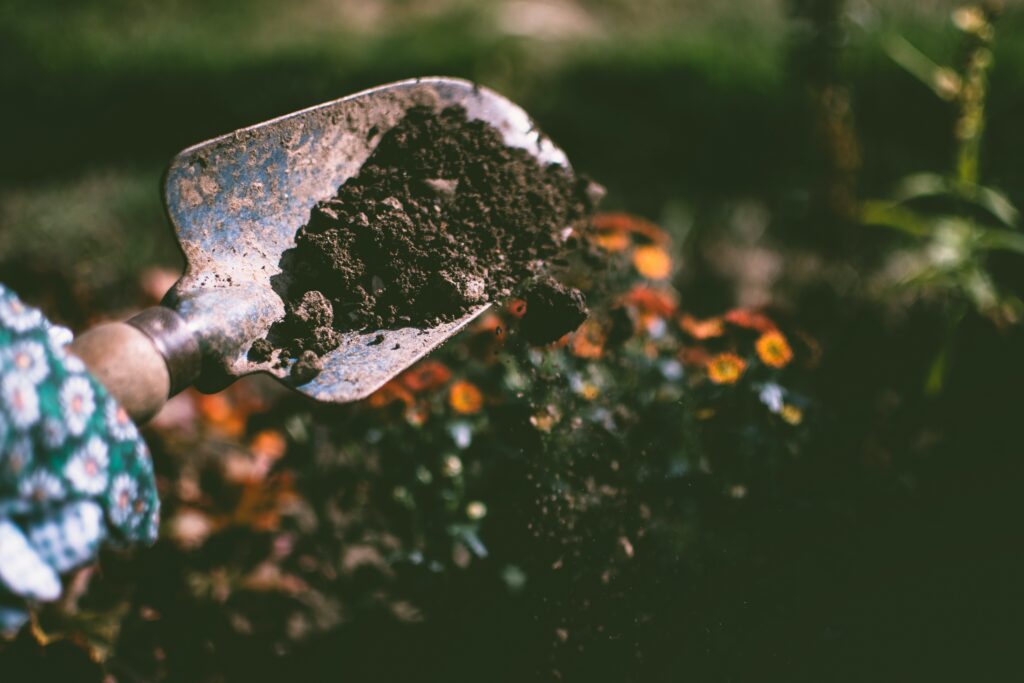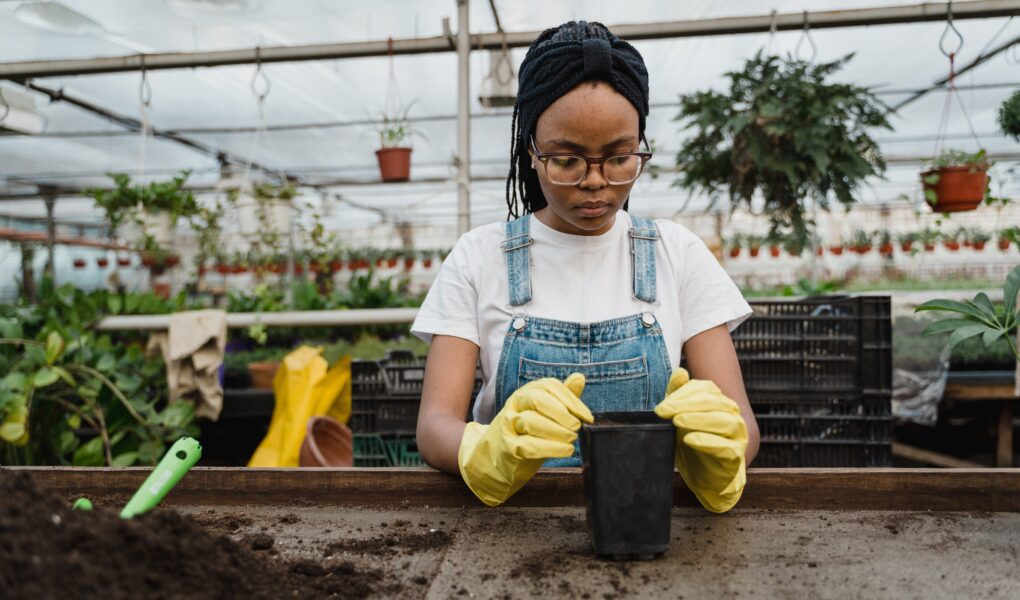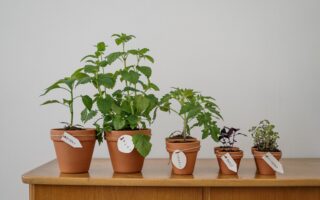Making compost is an efficient, cost-effective method to dispose of organic waste from the garden and kitchen; make it to reuse in the garden as a soil fertiliser. Grow, don’t throw! We are big on eco friendly ideas here at Make Their Day Flowers and this is a brilliant way to reduce, reuse and recycle!
Naturally occurring microbes in organic material break down and convert garden and kitchen wastes into one of nature’s best mulches and soil fertilisers. Compost uses the natural processes of decomposition to return organic materials to the soil, allowing these materials to be used again a classic example of the reuse concept.
Compost takes garden waste and plant-based kitchen scraps and the natural decomposition processes results in a mixture used to improve the quality of your soil and reduce commercial fertiliser use.

Kitchen and Garden Compost Materials
Good compost is made from soft plant materials such as leaves, grass clippings, weeds, faded flowers, vegetable tops, vines, straw, shredded newspapers (not shiny or coloured pieces, though). A good option for grass clippings is to leave the bag off, and let the clippings decompose back into the lawn. If you are putting grass clippings in the compost, make sure you mix the pile well. Grass clippings back down into a tight pile that can be difficult to decompose. Sawdust and wood chips can be composted, but require adequate nitrogen and take more time. Add grass clippings or a fertiliser high in nitrogen to help these materials decompose.
Do not attempt to compost branches, your Christmas Tree, or other woody materials. They allow too much air space in a pile, which keeps it too cool and take a very long time to decompose. Take these materials to a waste collection centre or use your garden waste collection bin. Do not add pet faeces or ash from charcoal or wood burners. Avoid putting diseased or insect-infested plant materials in the compost pile; it does not get hot enough to kill any pathogens. Weeds are fine, but keep seed heads out to avoid re-introducing the weeds when the compost is used. These materials should go in the bin and be removed to avoid re-contamination.
Kitchen Scraps for Compost
Plant-based products such as fruit and vegetable peels and trimmings are excellent additions. If the home includes a septic system, keeping out these materials out will help manage water and product use. Do not add kitchen waste that is protein-based, such as eggshells, meat, bones, drippings, and grease or dairy products. These will slow the decomposition and may attract rodents, stray dogs, and other pests.
How Do These Materials Turn into Compost?
Four things are needed to make compost: green materials for nitrogen, brown materials for carbon, water, and air. Green materials such as vegetable trimmings and grass clippings add nitrogen, which provides food for the microbes. In the completed compost, nitrogen adds an essential nutrient back into the soil.
Carbon from the brown sources such as dried grasses and weeds provides energy for the microbes as they work on breaking down the materials. Like all natural processes, air (oxygen) and water are needed to complete the process. Water helps move the microbes around the pile. These ingredients create heat as they work together, providing the correct environment for the microbes that do the work.

Build or Buy a Compost Bin or Container
There are many simple plans for building a compost bin to be found on the internet. Many garden centres and home improvement stores sell compost barrels that are attractive and take little space.
Making Compost
Locate the container or bin at least 2 feet from the house, with easy access to water. Make it easy to move yard waste to the site, and not far from the kitchen. Mix organic materials as they are added. Spray with a little water to speed decomposition. Keep it moist, but not soaked.
Turn the pile weekly with a spade or fork to introduce air regularly and aid in the decomposition and control odours. Active compost will heat to 120 to 160 degrees in the centre of the pile. Heat is needed to encourage the bacterial process and help sanitise the interior of the pile.
In cold climates, stop turning the pile in the autumn to allow the heat to be retained. Start turning in the spring to start the process again. Compost is ready to use when the pile is one-half of the original size, no longer resembles leaves and potato peelings, and has a pleasant earthy smell.
Using Compost
Add compost to sandy soils to improve water retention and to clay soils to improve drainage. While compost is not a fertiliser, it does add nutrients to soil. Use compost to improve soil structure, mulch plants, or as potting soil for houseplants. Turn potato peelings and grass clippings into an asset for your garden.




